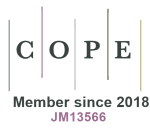Kidney transplant: gender differences
DOI:
https://doi.org/10.33393/gcnd.2023.2606Keywords:
Gender, Kidney transplantation, Organ donation, SexAbstract
Renal transplantation represents the best treatment for end-stage kidney disease, leading to improved quality of life and life-expectancy for most of the patients. However, gender disparities are evident both in access and in outcomes of kidney transplantation.nWomen on dialysis are less likely to be on the waiting list for kidney transplantation and receive an organ from a deceased donor or living donor. Several biological and sociocultural aspects could explain this disparity. On the contrary, more women than men are living kidney donors. Italian women are the first organ donors for living transplants in Europe. The gender difference in living donation is certainly affected by different comorbidities, but such a marked trend highlights a greater predisposition to donate of women, especially in the family context. Some differences are also found in kidney outcomes, even not fully understand. Our paper analyzes the main differences in different aspects of kidney transplantation related to gender, including nutritional aspects.
References
- Hart A, Lentine KL, Smith JM, et al. OPTN/SRTR 2019 annual data report: kidney. Am J Transplant. 2021;21(suppl 2):21-137. https://doi.org/10.1111/ajt.16502 PMID:33595191 DOI: https://doi.org/10.1111/ajt.16502
- Jindal RM, Ryan JJ, Sajjad I, Murthy MH, Baines LS. Kidney transplantation and gender disparity. Am J Nephrol. 2005;25(5):474-483. https://doi.org/10.1159/000087920 PMID:16127268 DOI: https://doi.org/10.1159/000087920
- Bloembergen WE, Mauger EA, Wolfe RA, Port FK. Association of gender and access to cadaveric renal transplantation. Am J Kidney Dis. 1997;30(6):733-738. https://doi.org/10.1016/S0272-6386(97)90076-7 PMID:9398115 DOI: https://doi.org/10.1016/S0272-6386(97)90076-7
- Salter ML, Gupta N, Massie AB, et al. Perceived frailty and measured frailty among adults undergoing hemodialysis: a cross-sectional analysis. BMC Geriatr. 2015;15(1):52. https://doi.org/10.1186/s12877-015-0051-y PMID:25903561 DOI: https://doi.org/10.1186/s12877-015-0051-y
- Salter ML, McAdams-Demarco MA, Law A, et al. Age and sex disparities in discussions about kidney transplantation in adults undergoing dialysis. J Am Geriatr Soc. 2014;62(5):843-849. https://doi.org/10.1111/jgs.12801 PMID:24801541 DOI: https://doi.org/10.1111/jgs.12801
- Schold JD, Gregg JA, Harman JS, Hall AG, Patton PR, Meier-Kriesche HU. Barriers to evaluation and wait listing for kidney transplantation. Clin J Am Soc Nephrol. 2011;6(7):1760-1767. https://doi.org/10.2215/CJN.08620910 PMID:21597030 DOI: https://doi.org/10.2215/CJN.08620910
- Alexander GC, Sehgal AR. Barriers to cadaveric renal transplantation among blacks, women, and the poor. JAMA. 1998;280(13):1148-1152. https://doi.org/10.1001/jama.280.13.1148 PMID:9777814 DOI: https://doi.org/10.1001/jama.280.13.1148
- Ravanan R, Udayaraj U, Ansell D, et al. Variation between centres in access to renal transplantation in UK: longitudinal cohort study. BMJ. 2010;341(jul20 1):c3451. https://doi.org/10.1136/bmj.c3451 PMID:20647283 DOI: https://doi.org/10.1136/bmj.c3451
- Couchoud C, Bayat S, Villar E, et al. A new approach for measuring gender disparity in access to renal transplantation waiting lists. Transplantation. 2012;94(5):513-519. https://doi.org/10.1097/TP.0b013e31825d156a PMID:22895611 DOI: https://doi.org/10.1097/TP.0b013e31825d156a
- Melk A, Babitsch B, Borchert-Mörlins B, et al. Equally interchangeable? How sex and gender affect transplantation. Transplantation. 2019;103(6):1094-1110. https://doi.org/10.1097/TP.0000000000002655 PMID:30747857 DOI: https://doi.org/10.1097/TP.0000000000002655
- Centro Nazionale Trapianti.Valutazione di qualità dell’attività del trapianto di rene 2000-2019. Online https://www.trapianti.salute.gov.it/imgs/C_17_cntPubblicazioni_409_allegato.pdf(Accessed May 2023)
- Fantuzzi AL, Berri E, Tartaglione L, Giannini R, Dominjanni e Porreca S. Salute renale per tutti e ovunque: riflessioni al femminile sul tema centrale della Giornata Mondiale del Rene. G Clin Nefrol Dial. 2020;32(1):73-80. https://doi.org/10.33393/gcnd.2020.2114 DOI: https://doi.org/10.33393/gcnd.2020.2114
- Zimmerman D, Donnelly S, Miller J, Stewart D, Albert SE. Gender disparity in living renal transplant donation. Am J Kidney Dis. 2000;36(3):534-540. https://doi.org/10.1053/ajkd.2000.9794 PMID:10977785 DOI: https://doi.org/10.1053/ajkd.2000.9794
- Donazione di organi da vivente e differenze di genere dati sistema informativo trapianti 2001-2017. (Accessed May 2023). Online https://www.trapianti.salute.gov.it/imgs/C_17_primopianoCNT_446_listaFile_itemName_0_file.pdf
- ISS Salute. Donazione di organi da vivente e differenze di genere. Dati Sistema Informativo Trapianti 2001-2017. Online https://www.issalute.it/index.php/donazione-organi(Accessed May 2023)
- Centro Nazionale Trapianti.Donazione di organi da vivente e differenze di genere. Dati sistema informativo trapianti 2001-2017. Online https://www.trapianti.salute.gov.it/imgs/C_17_primopianoCNT_446_listaFile_itemName_0_file.pdf (Accessed May 2023)
- Centro Nazionale Trapianti. ISS Salute. Trapianti da vivente, la generosità è donna: le donatrici sono il doppio degli uomini. Online https://www.trapianti.salute.gov.it/trapianti/dettaglioComunicatiNotizieCnt.jsp?lingua=italiano&area=cnt&menu=media&sottomenu=news&id=446 (Accessed May 2023)
- Chen PD, Tsai MK, Lee CY, et al. Gender differences in renal transplant graft survival. J Formos Med Assoc. 2013;112(12):783-788. https://doi.org/10.1016/j.jfma.2013.10.011 PMID:24246256 DOI: https://doi.org/10.1016/j.jfma.2013.10.011
- Klein SL, Marriott I, Fish EN. Sex-based differences in immune function and responses to vaccination. Trans R Soc Trop Med Hyg. 2015;109(1):9-15. https://doi.org/10.1093/trstmh/tru167 PMID:25573105 DOI: https://doi.org/10.1093/trstmh/tru167
- Rosenberger J, Geckova AM, van Dijk JP, et al. Prevalence and characteristics of noncompliant behaviour and its risk factors in kidney transplant recipients. Transpl Int. 2005;18(9):1072-1078. https://doi.org/10.1111/j.1432-2277.2005.00183.x PMID:16101729 DOI: https://doi.org/10.1111/j.1432-2277.2005.00183.x
- Aufhauser DD Jr, Wang Z, Murken DR, et al. Improved renal ischemia tolerance in females influences kidney transplantation outcomes. J Clin Invest. 2016;126(5):1968-1977. https://doi.org/10.1172/JCI84712 PMID:27088798 DOI: https://doi.org/10.1172/JCI84712
- Fouque D. Why is the diet intervention so critical during chronic kidney disease? J Ren Nutr. 2003;13(3):173. https://doi.org/10.1016/S1051-2276(03)00077-3 PMID:12874740 DOI: https://doi.org/10.1016/S1051-2276(03)00077-3
- Strejc J. Nutrition guidelines after kidney transplantation. J Ren Nutr. 2000;10(3):161-167. https://doi.org/10.1053/jren.2000.7914 PMID:10921538 DOI: https://doi.org/10.1053/jren.2000.7914
- Rutkowski P, Klassen A, Sebekova K, Bahner U, Heidland A. Renal disease in obesity: the need for greater attention. J Ren Nutr. 2006;16(3):216-223. https://doi.org/10.1053/j.jrn.2006.04.017 PMID:16825023 DOI: https://doi.org/10.1053/j.jrn.2006.04.017
- Mitch WE, Klahr S. Handbook of nutrition and the kidney. 5th ed. Lippincott Williams & Wilkins; 2005.
- Beto JA, Ramirez WE, Bansal VK. Medical nutrition therapy in adults with chronic kidney disease: integrating evidence and consensus into practice for the generalist registered dietitian nutritionist. J Acad Nutr Diet. 2014 Jul;114(7):1077-1087. https://doi.org/10.1016/j.jand.2013.12.009 PMID: 24582998 DOI: https://doi.org/10.1016/j.jand.2013.12.009
- National Kidnely Foundation. Foods to Avoid After Transplantation. Online https://www.kidney.org/atoz/content/foods-avoid-after-transplantation(Accessed May 2023)
- Fantuzzi AL, Gennari A, Pasticci F, Setari M, Tundo R. Ruolo del Dietista nella gestione nutrizionale del paziente con malattia renale cronica. Posizione dell’Associazione Nazionale Dietisti (ANDID). 2004. Online http://www.andid.it/andid/posizioni-dell-andid/item/ruolo-del-dietista-nella-gestione-nutrizionale-del-paziente-con-malattia-renale-cronica(Accessed May 2023)
- United States Department of Agriculture. Food Safety A Need-to-Know Guide for Those at Risk. Onlinehttps://www.fsis.usda.gov/sites/default/files/media_file/2021-04/at-risk-booklet.pdf(Accessed May 2023)
- Beto JA, Schury KA, Bansal VK. Strategies to promote adherence to nutritional advice in patients with chronic kidney disease: a narrative review and commentary. Int J Nephrol Renovasc Dis. 2016;9:21-33. https://doi.org/10.2147/IJNRD.S76831 PMID:26893578 DOI: https://doi.org/10.2147/IJNRD.S76831











